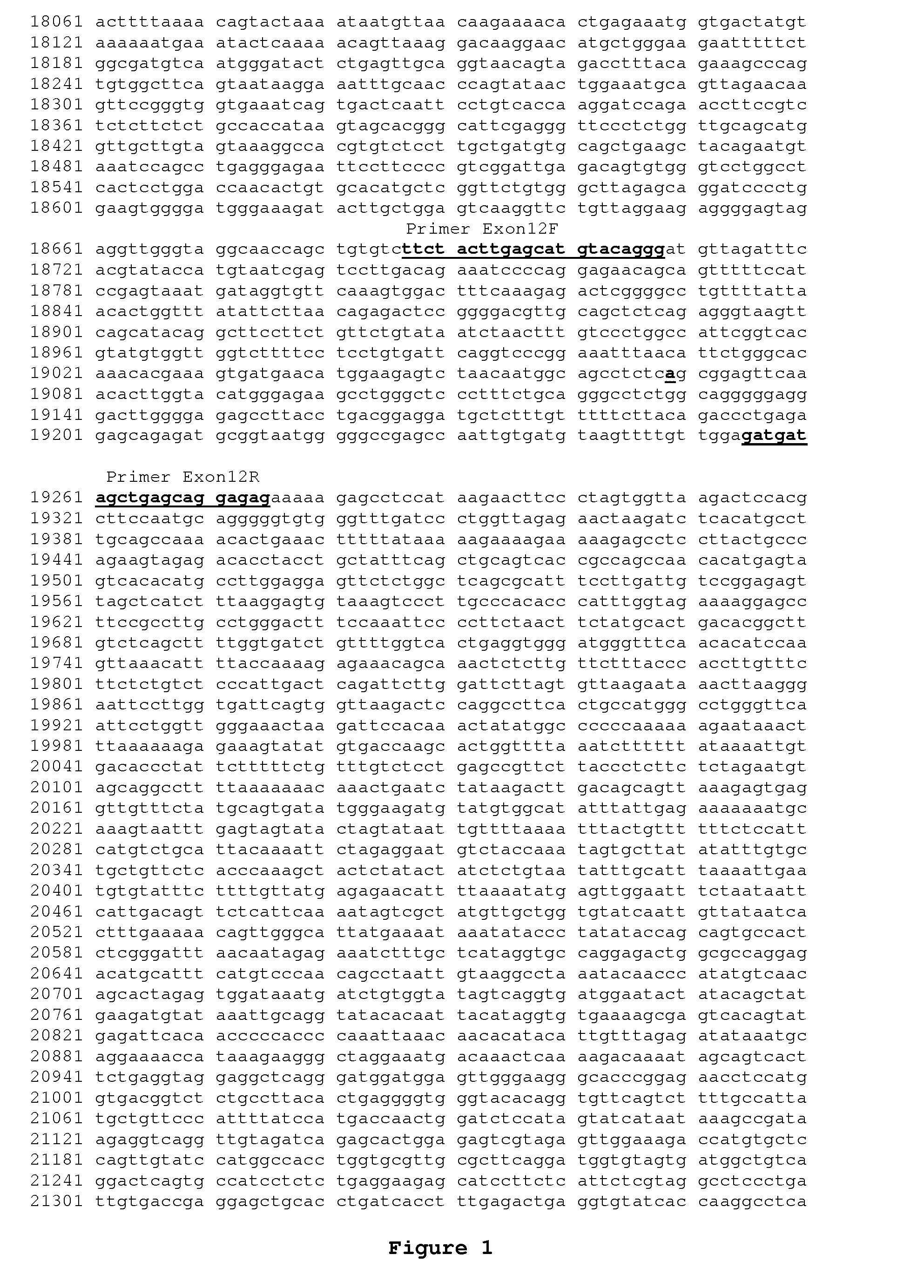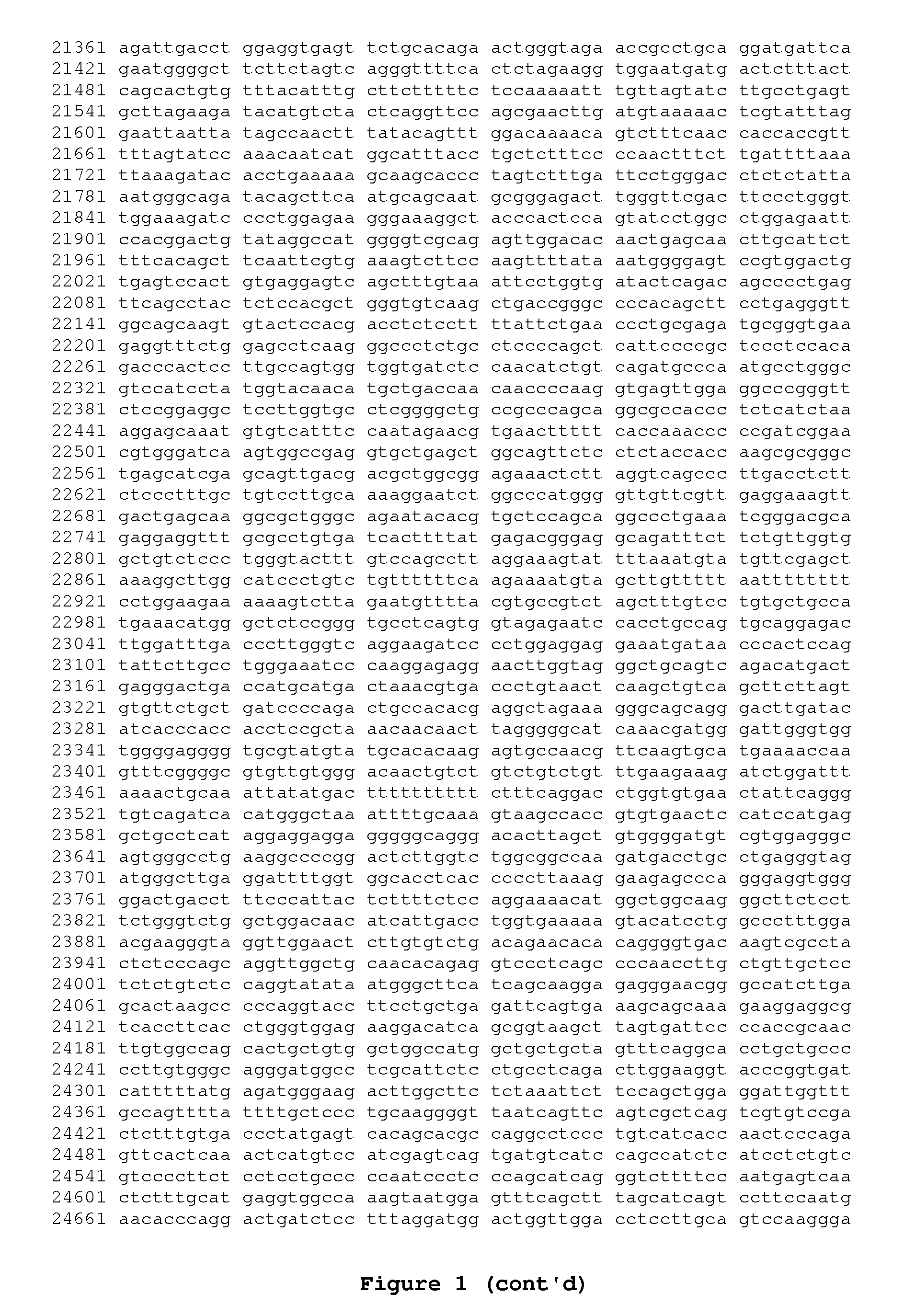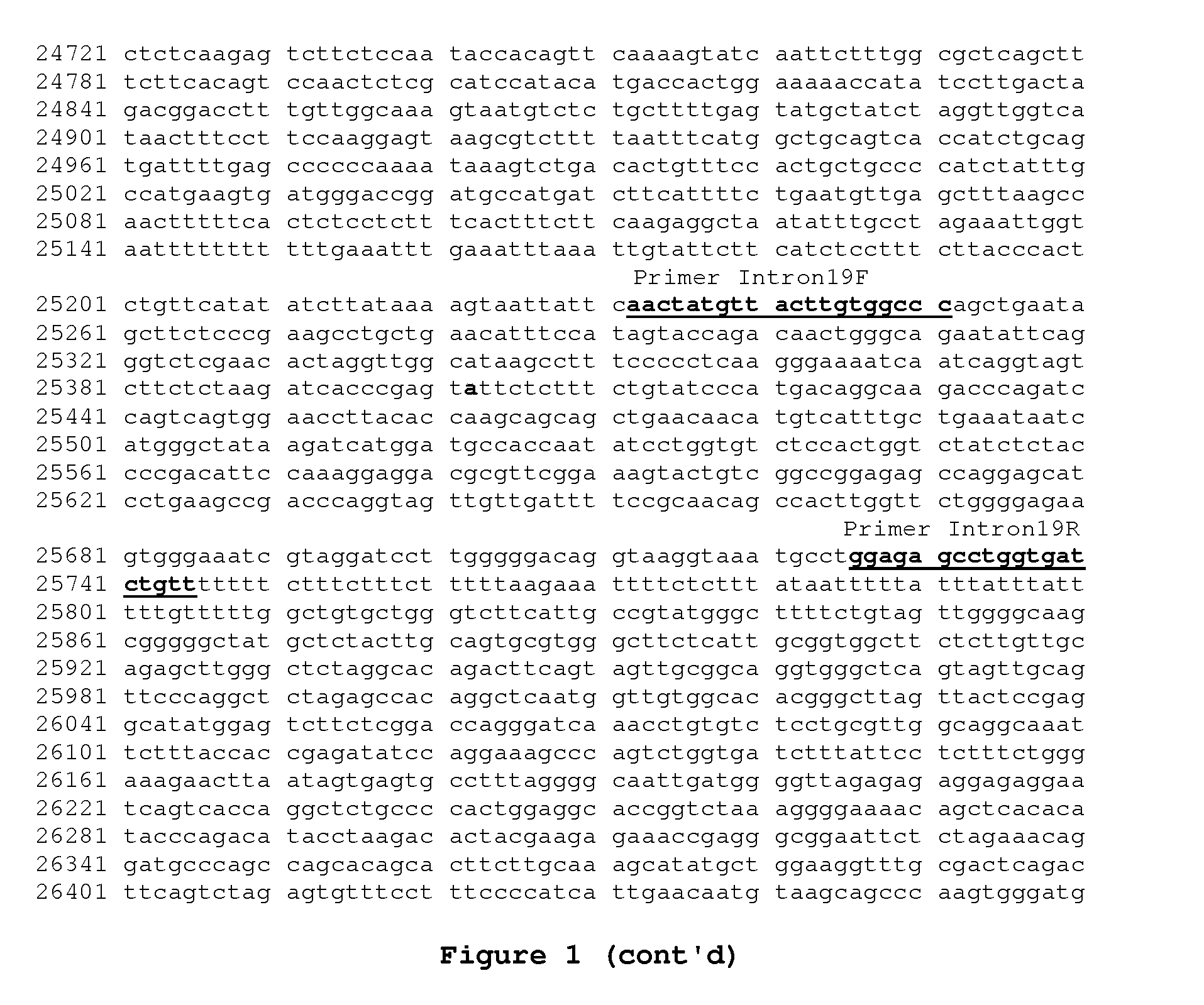Methods and compositions for improved fertilization and embryonic survival
a technology of genetic testing and embryonic survival, applied in the field of genetic testing for improving fertilization rate and embryonic survival rate in animals, can solve the problems of poor performance of dairy cattle, low fertilization rate and early embryonic loss, and culling of dairy cows and economic losses
- Summary
- Abstract
- Description
- Claims
- Application Information
AI Technical Summary
Benefits of technology
Problems solved by technology
Method used
Image
Examples
examples
Materials and Methods
[0067]In-Vitro Fertilization and Embryo Production
[0068]Ovaries from mature Holstein cows (n=512) were collected from a local abattoir over a 3 yr period and immediately used in the IVF experiments. No genetic relationship information was available for these cows. Oocytes were aspirated from antral follicles and immediately incubated in maturation medium. On average, about 16.8 oocytes were aspirated from each ovary. Ovaries (n=67) from which fewer than 4 oocytes were harvested were excluded from the analysis. All oocytes aspirated from an ovary were combined with semen from one bull for an incubation period of 18-25 h as described in Khatib et al. (2008a,b). Semen of unrelated bulls (n=12) was purchased from different artificial insemination companies in Wisconsin. Fertilization rate was calculated as the number of cleaved embryos at 2 d post-fertilization out of the total number of oocytes exposed to sperm. After the fertilization period (fertilization=day 0),...
PUM
| Property | Measurement | Unit |
|---|---|---|
| time | aaaaa | aaaaa |
| polymorphic | aaaaa | aaaaa |
| frequency | aaaaa | aaaaa |
Abstract
Description
Claims
Application Information
 Login to View More
Login to View More - R&D
- Intellectual Property
- Life Sciences
- Materials
- Tech Scout
- Unparalleled Data Quality
- Higher Quality Content
- 60% Fewer Hallucinations
Browse by: Latest US Patents, China's latest patents, Technical Efficacy Thesaurus, Application Domain, Technology Topic, Popular Technical Reports.
© 2025 PatSnap. All rights reserved.Legal|Privacy policy|Modern Slavery Act Transparency Statement|Sitemap|About US| Contact US: help@patsnap.com



